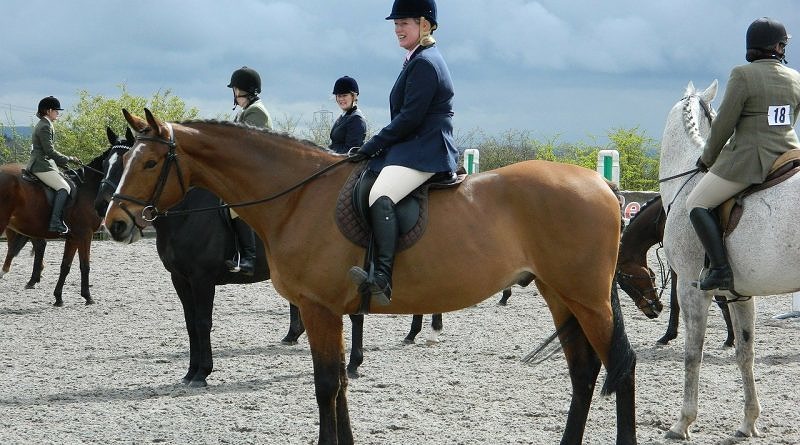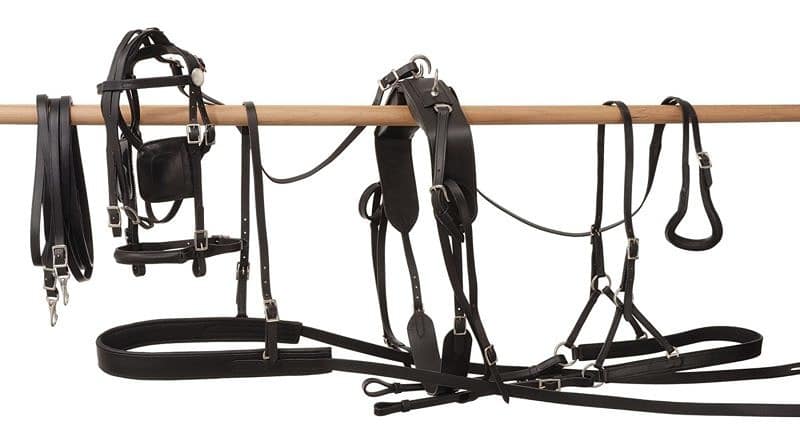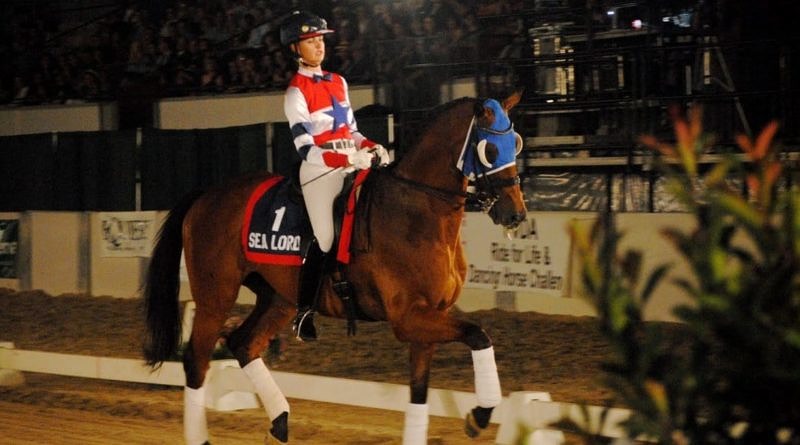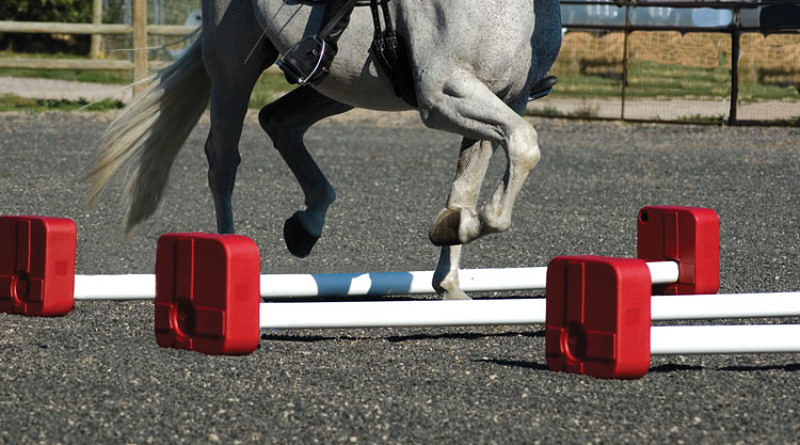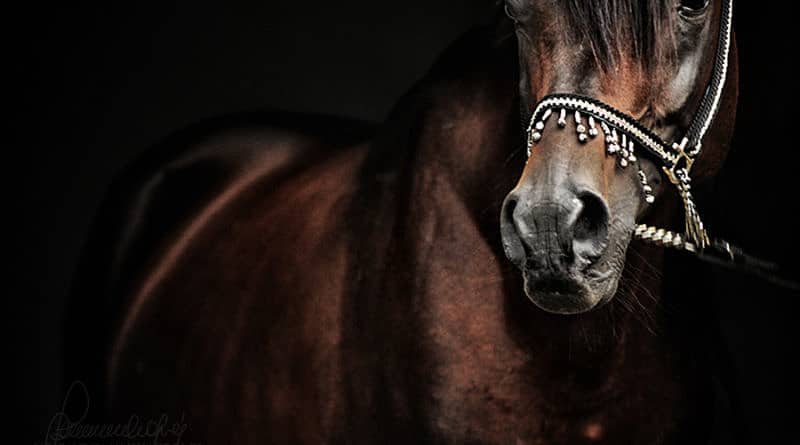Horse abuse no longer shocks me. Here’s why.
Shockwaves sent through the equestrian world! Dismay and outrage as a top dressage rider gets caught on camera whipping a horse 24 times in less than a minute… The FEI provisionally suspends her just days before the Olympics! The British team must scramble to replace her! Condemnation from (almost) everyone! Her behaviour was unprecedented, embarrassing, and shocking!
Or is it?
The truth? Go to any barn. Look around you. Do you see what I see? Whips everywhere. The only thing more ubiquitous is the ropes we use to restrain the horses we love. Everyone owns a whip. Or two. Or three… Did you see the one casually lying in the barn aisle as you stepped over it? Did you even notice it?
And in the tack shop? Whips of all kinds; specialised whips for dressage which give you more reach, whips for smacking horses to make them jump, wider ones and narrower ones, some with a lash, some without, whips to make it easier to hit a horse from a distance when you want to make them run in a circle – that’s the kind Charlotte used. And then there are the sparkly pink ones for the horse-loving little girl when you don’t know what to get for her birthday.
I can hear all the flustered equestrians getting their excuses ready, “a whip is only for encouragement!”, “it’s an extension of your arm!”, “you clearly don’t know how to use a whip correctly”, “some horses need a good licking sometimes…” You think I’m making that one up but it came out of the mouth of US showjumper Katie Prudent at a clinic the USEF filmed and uploaded for the world to watch.
Are there non-abusive ways to use a whip? Of course there are. But that is missing the point!
Whips were made to inflict pain. It IS their purpose no matter how much some may want to protest. That truth makes people uncomfortable, I know. But none of us would bring a whip to a dog training class no matter how we intended to use it. It would not feel right. So why does it feel right with horses?
In fact, what I found is that it feels more than right. It almost feels necessary. Carrying a whip legitimises the training I am doing in the eyes of equestrians. If I am without a whip I must be one of those bleeding heart types. I don’t know what I’m doing and my horse is going to walk all over me. You know what I’m talking about because you’ve either felt it yourself or you are having those thoughts about me right now.
“Well horses aren’t dogs!” Some will retort. True. But are we alright with whips being used on circus tigers? How about elephants?
What it comes down to is this: we have collectively normalised the use of whips on horses to inflict pain to the point where we don’t even notice it any more. When I watched that fateful video of Charlotte Dujardin abusing that unfortunate horse, my first thought was “that’s not as bad as I expected”.
Hitting horses is so common in the horse world that even the rules meant to protect the animals we abuse hint at this reality. It’s not a warning for “whip use”. It’s for overuse, or excessive use, or too many strikes. Because it’s ok to hit a horse to get them to jump obstacles or run fast for our amusement as long as we only hit them a little bit.
(No, I don’t think we should just stop riding horses and release them into the wild. There is a middle ground.)
The equestrian world has normalised the abuse of horses
This isn’t only about whips though. It’s about how we treat horses in general. I’ve seen a lot of people upset by what they saw in that video. I’ve seen a lot of people upset by Cesar Parra, Andreas Helgstrand, Oliver Townend, and all the other high profile equestrians – there are many – who have been in the limelight for all the wrong reasons in recent months. But I have also seen people pointing out that these things happen every day at all levels and that many horses are subjected to worse. And I’ve also seen those who would like us to all just shut up and pretend everything is unicorns and rainbows because they feel the tide turning and they don’t want us to lose our sport.
In fact, do we even care about horses, or are we just trying to save our sport? It’s revealing that so much of the conversation recently has been dominated by the concept of Social License to Operate (SLO), rather than focusing explicitly on welfare. We care more about what looks bad than what is bad.
The FEI did a remarkable thing when they suspended Charlotte Dujardin and stopped her going to the Olympics. They’ve been doing that kind of thing a fair bit lately and it is interesting to observe the change. Is it because we’re in an Olympic year and the IOC has to make decisions about the inclusion of Equestrian sport at future Olympics? We can only speculate.
Are we missing the point?
Many other activities involving animals that are perceived as abusive are gradually losing their SLO and declining. Fox hunting was outlawed in England because it had lost its SLO, and the people in government at the time figured a ban was a savvy political move. SeaWorld stopped breeding orcas after losing its SLO to perform shows with them. Circus animals are heavily regulated in many parts of the world following a collapse in SLO. Dog fighting hasn’t had a SLO for a long time… And even bullfighting in Spain is losing its SLO, tradition be damned!
But here’s the thing: preserving our SLO shouldn’t be the focus! The fact that we spend so much time talking about public perception simply betrays a sad underlying truth. Because horse welfare in and of itself is a worthy cause. Why wouldn’t we want to make our horses’ lives better if we love them so much? Some of us need to face up to the reality that we may love riding more than we love horses.
If horse welfare is best served by the demise of horse sport, so be it! If equestrians can’t look inwards at themselves and make changes, the sport will just have to go. Because the horse does come first.
Ironically, our sport would never have come under threat if all equestrians took this perspective to begin with. Charlotte would never have had a lunge whip in her hand. Oliver Townend would have pulled up because his horse was tired and he genuinely cared. Helgstrand’s employees wouldn’t be covering up spur wounds because there wouldn’t be any spur wounds!
If we just stopped arguing about things like when, with what, and how hard it’s appropriate to hit a horse, because it’s just not appropriate. Or just how tightly it’s ok to overflex a neck, because it’s just not ok. Or how soft hands need to be to operate the harshest bits, because we just shouldn’t use those bits. Or what matters of convenience justify keeping horses in isolation, because horses simply shouldn’t be in isolation… If we actually took research-informed stances on welfare with the horse as the priority and sport second, our sport would be just fine!
Do You Stand with the Sport, or the Horse?
Ultimately, the equestrian community must confront its values and priorities. The question shouldn’t be focused on preserving our sport. If we really care about horses, we should prioritise horse welfare because we care about horses. We shouldn’t need the threat of losing our SLO, or our place at the Olympics, or a particular discipline, to motivate us. For as long as the concept of SLO or “how we look to the public” dominates conversation, we can be certain that the one thing that isn’t top of the equestrian agenda is the horses themselves.


